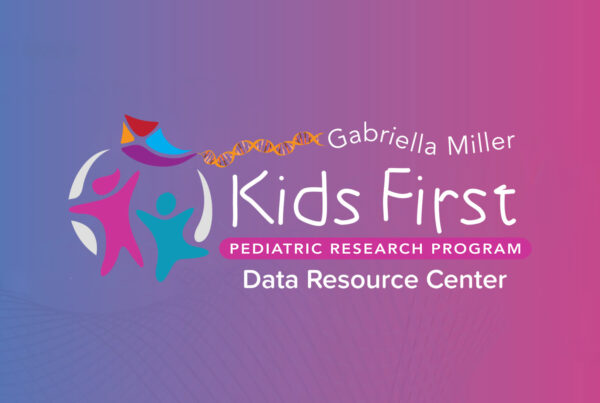A New Chapter in Pediatric Research
In a landmark move poised to transform research for rare congenital disorders and childhood cancers, the Gabriella Miller Kids First Pediatric Research Program Data Resource Center (Kids First DRC, or Kids First Data Resource Center) has unveiled the upgraded Kids First Data Resource Portal (Kids First Portal), bringing with it a new era of streamlined data access and collaborative potential. The culmination of extensive development efforts, this upgraded platform marks a significant advancement in enhancing user experience and amplifying research impact to help doctors, patients, and families.
The original Kids First Portal served as a foundational step in the program’s mission to accelerate pediatric research. It provided researchers with access to valuable datasets and laid the groundwork for collaborative endeavors in the field of pediatric oncology and congenital disorders. However, as research needs evolved and technological capabilities advanced, it became apparent that the original portal could not keep up the pace with the growing demands of the scientific community.
Accessible at portal.kidsfirstdrc.org, the newly updated Kids First Data Portal represents a fundamental shift toward user-centric design, prioritizing accessibility and functionality. By consolidating data exploration and file access into a single interface, the platform minimizes cognitive load and streamlines navigation, fostering a more intuitive user experience. The new portal aims to expand user accessibility for researchers, patients, and families who are not–bioinformaticians.
Key Enhancements: Pioneering Features for Efficient Research
-
- Unified Interface: Simplifying data exploration by consolidating features into a cohesive interface, minimizing complexity, and maximizing efficiency.
- Enhanced Search Functionality: Leveraging advanced algorithms to enable precise dataset pinpointing, saving researchers valuable time and enhancing research efficiency.
- Interactive Data Visualization: Empowering users to uncover insights through dynamic visualization tools, facilitating hypothesis generation and data interpretation.
- Improved Annotations: Predict the consequences of genomic variants on pediatric conditions with new and updated annotations.
- Searchable Ontologies: Identify patients by condition using searchable disease and phenotype ontologies.
With the unified interface, a researcher can seamlessly navigate through different datasets, accessing clinical and genomic data with ease. Using the enhanced search functionality, they refine their queries to pinpoint specific genetic mutations associated with the cancer or congenital disorder subtype they’re studying, saving valuable time in the research process.
The Kids First Portal connects with other web-based research platforms for further analysis. As researchers dive deeper, they can engage with interactive data visualization tools through the PedcBioPortal, exploring gene expression patterns and mutation frequencies across different patient cohorts. These dynamic visualizations not only aid in identifying potential biomarkers but also spark new hypotheses for further investigation.
Furthermore, researchers can take advantage of the benefits of collaboration with other brilliant minds from diverse disciplines in CAVATICA, Kids First’s cloud-based analysis platform. With customizable workspaces, a user can create a shared environment where her team can collaborate in real-time, accessing relevant datasets and analyses tailored to their individual needs. This collaborative workspace fosters synergy among team members, leading to faster, more impactful research outcomes.
Unlocking Collaborative Potential
The significance of collaborative data sharing in pediatric research cannot be overstated. Congenital disorders and pediatric cancers are often rare and complex, requiring a collective effort to understand fully. By integrating genomic data from those like the Children’s Brain Tumor Network (CBTN) alongside existing datasets within the Kids First Portal, researchers gain a more comprehensive view of the genetic landscape underlying these conditions. Insights gained from studying brain tumors, for example, may have implications for understanding other congenital disorders with overlapping genetic pathways, leading to more targeted and effective treatments.
The integration of data from CBTN and other programs into the Kids First Portal marks a significant milestone in pediatric research, symbolizing the program’s commitment to collaboration and data sharing. But why is this collaboration so crucial, and how does it benefit researchers and ultimately, the children and families they serve?
Pediatric research is inherently complex, with diverse conditions requiring comprehensive data to unravel their mysteries fully. The inclusion of data across diverse conditions, like CBTN’s genomic data, represents more than just an expansion of the Kids First Portal’s offerings; it embodies a philosophy of collaboration that recognizes the value of diverse datasets in advancing understanding and treatment.
“The inclusion of CBTN genomic data represents a significant milestone for us. It not only expands the scope of our research but also underscores our commitment to collaboration and data sharing in the pediatric research community.” —David Higgins, Informatics Program Manager
The launch of the updated Kids First Data Portal represents a milestone in pediatric research, empowering researchers to accelerate discoveries in pediatric oncology and congenital disorders. By prioritizing user-centric design and seamless data integration, the Kids First Data Resource Center aims to drive innovation and improve outcomes for children and families worldwide.
For more information about the Kids First Data Portal and the Kids First Data Resource Center, please visit kidsfirstdrc.org.










